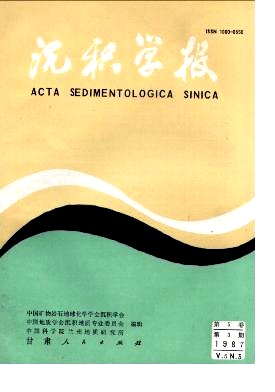STORM EVENTS AND PHOSPHATE DEPOSITION IN CAMBRIAN ON THE WESTERN MARGIN OF THE YANGTZE PLATFORM, CHINA
- Publish Date: 1987-09-10
Abstract: During the early Cambrian to the early epoch of the middle Cambrian, the storm event took place on the Yangtze platform of China and its adjacent areas. The tempestites as well as storm sedimention in three formations from below to upward which are distributed from west to east and from south to north across this region have been found, among which the phosphatic tempestites in the Meishucun Formation in lower Cambrian are the most typical. The typical phosphatic tempestite consists of packstone and wackestone which have a lot of depositional-structural characteristics of differently evolutionary stages of storm: 1, sharp basal boundary and basal surface structures, i. e. waved gutter cast, pocket structure, reworked hardground and lag gravel. 2, graded bed consisting of phosphatic, dolostone, and remains of small shell fossils. 3, ripple cross lamination. 4, including three kinds of hummocky cross stratification: single type, overlap and amalgamated types. 5, parallel lamination with trace fossils on the top surface which was formed in post-storm stage, i. e. didymaulichnus, Jia, Caraulichnus, Gordia and Spirophycus. Three phosphatic tempestite sequences are divided by the strength of the wind-induced, storm duration and the path of storm travelling: 1, completed type. 2, quasi-completed type. 3, amalgamated type. The analysis of the phosphatic tempestite sequences show that the activity of storm impacted the Chuandian old island and the inside of the Nioushoushan old island, it seemed to be descent of the sea level between the two old islands, the sea water supplied from the outsea with the result and the upwelling current could be formed. The phosphorous-rich water moved with the upwelling current and provided the material source for the phosphatic deposits. The precipitated phosphatic were reworked and transported by the storm surge and storm current, which removed to the areas of Kunyang and Haikou where the low grade proximal phosphatic tempestite were formed, along the outside of that areas the high grade distal phosphatic tempestite were precipitated, therefore, storm and storm current not only played an important role in the formation and acceleration of the circulation as well as supply upwelling current but the driving forces phosphatic winnowing and enrichment precipitating. The important phosphatic enrichment zones and the region of commerical phosphate deposits of our country were formed in the path of the storm current and upwelling current along the western margin of the Yangtze platform.
| Citation: | Liu Baojun, Xu Xiaosong, Luo Anping, Kang Chenglin. STORM EVENTS AND PHOSPHATE DEPOSITION IN CAMBRIAN ON THE WESTERN MARGIN OF THE YANGTZE PLATFORM, CHINA[J]. Acta Sedimentologica Sinica, 1987, 5(3): 28-39. |






 DownLoad:
DownLoad: